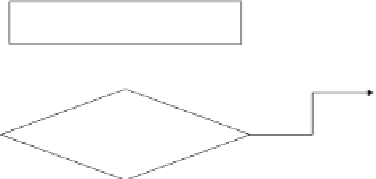Environmental Engineering Reference
In-Depth Information
removal) is the most sustainable because (a) organic matter is not required, (b) sludge pro-
duction is low, and (c) nitrogen removal is high.
More extensive efforts have been performed by Alimahmoodi et al. (2010). It is a decision
support tool (GoldSET) developed to incorporate sustainable development principles into
engineering projects. It has a new wastewater treatment module that allows the applica-
tion of sustainability principles through the tool to projects within the wastewater context
to provide an assessment of different project options against a number of quantitative
and qualitative sustainability indicators for the four dimensions of sustainability: environ-
ment, society, economy, and technology. Indicators provide a way of describing the situa-
tion surrounding the project, along with an associated weighting scoring scheme allowing
the relative importance of each indicator to be relected. The scoring scheme assigned
to each indicator provides a mechanism to assess the performance of each option with
respect to the indicator, producing a comparative graphical result of each option's sustain-
ability performance. The developed module allows for both detailed design-engineering
phase option assessments and design selections, and for more general project planning
decisions, or future upgrades prioritization decisions.
3.4.2 Groundwater and Water Management
An effective groundwater management policy must irst involve an evaluation of pres-
ent practices—beginning with a determination of (a) the basic needs for the water and
(b) laws and regulations that need to be established to ensure water quality and quantity.
As shown in Figure 3.16, one must irst determine if adequate quantities of groundwater
Groundwater quality and
quantity
Allow recharge until
levels sucient
Yes
No
Sucient quantity?
No
No
Quality meets drinking
water standards
Treatment required?
Yes
Yes
Use water for
other
purposes
Structure required
programs to ensure
quality and quantity
Use for
drinking water
Meets drinking
water
requirements
Sustainable treatment chosen
FIGURE 3.16
Flow diagram for groundwater management for drinking water purposes.

















Search WWH ::

Custom Search